Standing Rock Sioux Tribe Chair Janet Alkire delivers the Tribal-State Relationship address during a joint session of the Legislature on January 7, 2025. Photo by Michael Achterling / North Dakota Monitor
Tribes, the state and federal government must continue to work together for the benefit of their people, Janet Alkire, chair of the Standing Rock Sioux Tribe, said in a Tuesday address to state lawmakers.
“Our common citizens are our bridge, and without the valuable support they need, that infrastructure will collapse,” Alkire said.
In her speech, Alkire provided the Legislature with updates on the five Native nations that share geography with North Dakota: Standing Rock, the Spirit Lake Nation, the Mandan, Hidatsa and Arikara Nation, the Turtle Mountain Band of Chippewa and the Sisseton-Wahpeton Oyate.
The need for more infrastructure on reservations was a common refrain in Alkire’s speech.
In recent years, North Dakota tribes have benefited from federal legislation like the American Rescue Plan Act and other funding to support developments as wide ranging as new housing, medical facilities and energy projects, she said.
For instance, the U.S. Department of Transportation has awarded a $14.5 million planning grant for a proposed bridge over the Missouri River connecting the reservation to Emmons County.
But it’s not enough, Alkire said. She called on lawmakers, tribal chairs and federal leaders to continue investing in infrastructure in the interest of future generations.
“A bridge to the future needs infrastructure,” she said.
Alkire also highlighted health care, education and economic development as key priorities for the tribes.
She urged the Legislature to pass a bill this session to fund research into how much the tribes contribute to North Dakota’s gross domestic product.
Mark Fox, chairman of the Mandan, Hidatsa and Arikara Nation, said he brought that proposal to Alkire. He said the state had previously commissioned a similar study in the early 2000s.
Fox added that the state and tribes shouldn’t see each other as economic competitors, but as collaborators.
“We need to be partnering in all the things that we do,” he said in an interview after the address.
Rep. Lisa Finley-DeVille, D-Mandaree, and Rep. Collette Brown, D-Warwick, agreed that improving the working relationship betweens the state and tribes should be a priority for the upcoming biennium.
Keeping an open line of communication is an important part of that, Brown said. She said she plans to introduce a bill that would require the state to notify tribal chairs about any proposed legislation that would affect their communities.
Also Tuesday, Gov. Kelly Armstrong called for collaboration with tribal partners during his State of the State address.
“Their challenges are our challenges,” Armstrong said. “Their successes are our successes.”
Alkire in her speech also voiced support for a measure to create an alert system for missing and murdered indigenous people in North Dakota. She said the bill would be brought this session by Rep. Jayme Davis, D-Rolette.
Brown said she has also pushed for an alert for Missing and Murdered Indigenous People.
Expanding funding and staffing for Bureau of Indian Affairs law enforcement is also key to addressing crime on reservations, Alkire siad.
“The federal government has been woefully underfunding our law enforcement budgets,” she said.
President-elect Donald Trump has named former North Dakota Gov. Doug Burgum as his pick for secretary of the Interior.
Alkire said while she’s unsure how Trump’s administration will impact tribes overall, she’s hopeful a more conservative administration could result in greater sovereignty for Native nations.
Alkire said if Burgum is confirmed as secretary of the Interior, he would be an asset to tribes. She said the former governor has stayed in touch with tribal chairs since leaving office.
“The tribes agree that a reduction in bureaucratic overhead could be extremely beneficial,” Alkire said.
She expressed frustration over needing to get federal approval for many uses of their own land. Historically, Sioux territory stretched from present-day Minnesota to Montana, up through part of Canada and down to Kansas and Nebraska, she said.
Under an 1851 treaty with the federal government, that was reduced to part of modern-day North Dakota, South Dakota, Montana, Nebraska and Wyoming. The federal government subsequently violated that agreement and annexed additional parts of the Sioux Nation, further reducing Native territory. Today, the Standing Rock Reservation encompasses about 2.3 million acres.
YOU MAKE OUR WORK POSSIBLE.
GET THE MORNING HEADLINES.
This story originally appeared on North Dakota Monitor on January 7, 2025. It is published under a Creative Commons license (CC BY-ND 4.0).
North Dakota Monitor is part of States Newsroom, a nonprofit news network supported by grants and a coalition of donors as a 501c(3) public charity. North Dakota Monitor maintains editorial independence. Contact Editor Amy Dalrymple for questions: info@northdakotamonitor.com.


